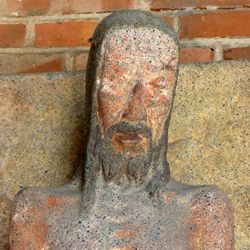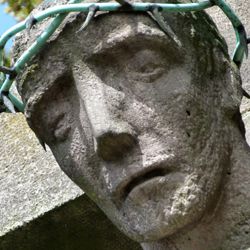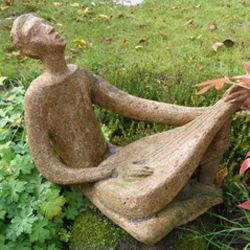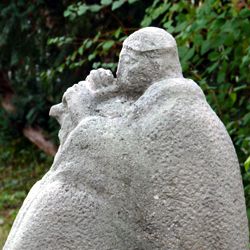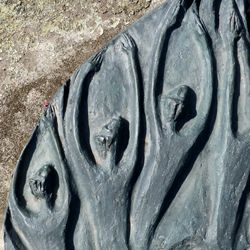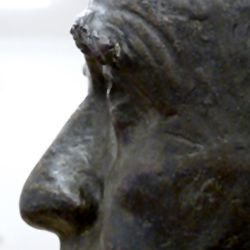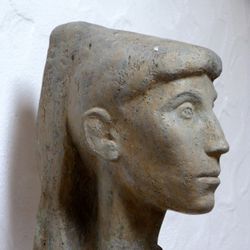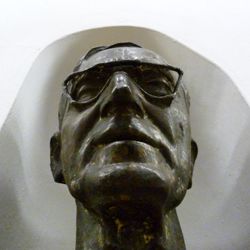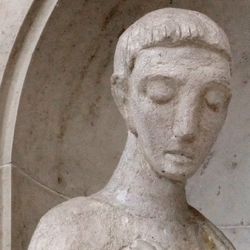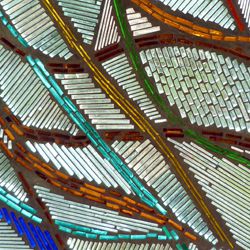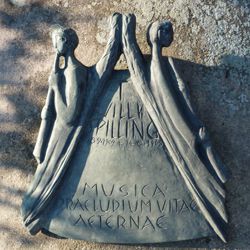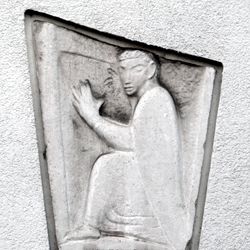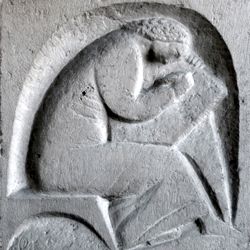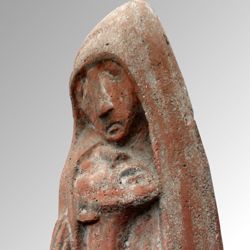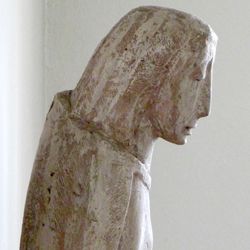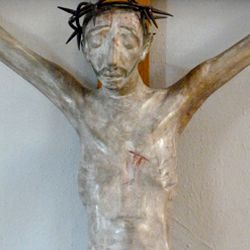Luis
Rauschhuber
sculptor
born München, 31. May 1904
died Nürnberg, 07. May 1973
Stone sculptor, terracotta and other materials Grew up as an orphan with his grandparents (in great poverty) in Niederndorf/Obb. After their death, he was left alone and worked as a surveyor and office assistant on the canal construction on the Inn from 1921. At the end of 1924 he moved to his aunt in Nuremberg, where he completed an apprenticeship as a stone sculptor from 1924-26. He took drawing lessons in evening classes at the School of Applied Arts and was accepted into this school in 1926 due to his special talent. During his apprenticeship in 1926 he worked as a stonemason at the Lorenzkirche in Nuremberg. 1926-30 studied with Philipp Widmer, sculpture class at the School of Applied Arts in Nuremberg, Flaschenhofstrasse (from 1929 it was renamed the "State School of Applied Arts") 1930-33 studied at the AdBK Munich with Prof. Karl Killer, with a scholarship. 1933-36 studied again at the State School for Applied Arts in Nuremberg, master student of Philipp Widmer (already a sought-after portraitist here). From 1936 he worked as a freelance sculptor in Nuremberg. He became known mainly through portraits and created garden/architectural sculptures and, preferably, sacred sculptures. Drawing also plays a significant role in his work. Many of his works are now in public spaces, mostly in and around Nuremberg. ____________________________ Apart from 1942, Rauschhuber was represented at every "Great German Art Exhibition" until 1944 (...) Further exhibitions of Rauschhuber's works took place in 1940 as part of the "Great Berlin Art Exhibition" and in 1942 in the Moritzburg Museum in Halle an der Saale. (...) After 1945, Rauschhuber increasingly turned to religious sculpture and created numerous depictions of the Virgin Mary and Christ. He also created tombstones, fountain figures and portrait busts. In 1948, Rauschhuber joined the Nuremberg artist group "Der KREIS", which had been founded a year earlier, and with which he frequently exhibited. Lit.: Grauzonen. Nürnberger Künstler:innen im Nationalsozialismus. Edited by Andrea Dippel, Nuremberg 2022, pp. 258 - 267. ____________________________ In the artist's former home in Ziegelstein, it is possible to visit an exhibition room by appointment. Information at: www.luis-rauschhuber.de
Period: 20th c.
